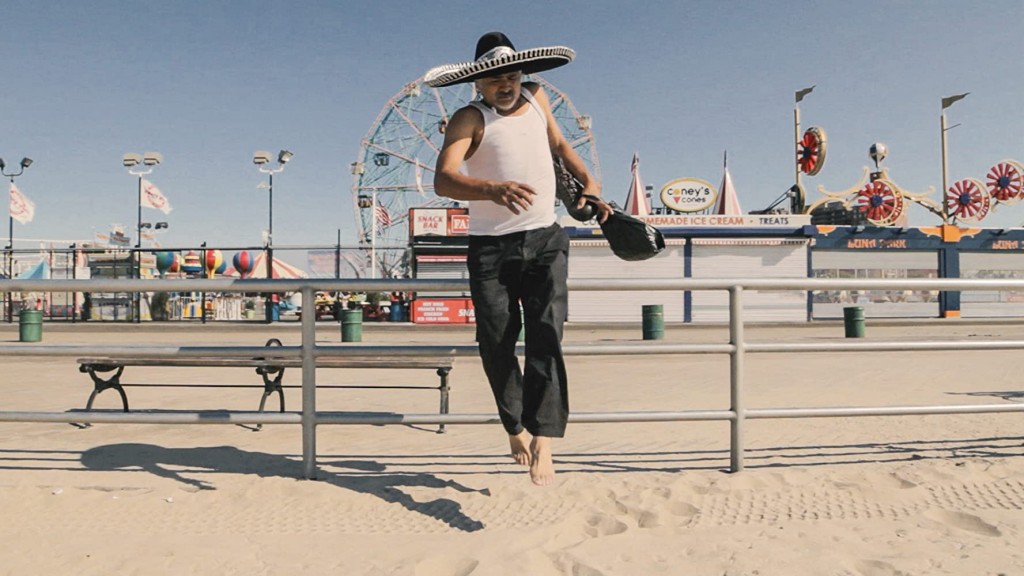The Utah Film Center continues its series of live streaming events, which are free and open to the public, during May. The next three films are, respectively, about integrative care in veterinary medicine; a historical manga series adapted for an anime film about the life of Japanese artist Katsushika Hokusai, as seen from the eyes of his daughter, and an undocumented immigrant from Mexico who wants to return to his home country after being in the U.S. for 16 years.
The Utah Review previews each of the films with details about the livestream dates and times. In addition, The Utah Review has screened Miss Hokusai and I’m Leaving Now, as reflected in short reviews about these films.

The Dog Doc (directed by Cindy Meehl, 2019) – May 5, 7 p.m. Link to livestream
This film, representing two and a half years of work, focuses on the veterinary practice of Dr. Marty Goldstein at the Smith Ridge Veterinary Center in South Salem, New York. However, Dr. Goldstein is no ordinary veterinarian. Simultaneously praised and criticized for his uniquely holistic approach to caring for seriously ill animals, he is followed by Meehl and her crew, as the film documents the progress of his treatment protocols.
In a recent New York Times review, Teo Bugbee writes, “Though this sometimes means the movie adopts a defensive posture, it also means that the audience is clear on what the veterinarians at Smith Ridge recommend. This is not a homeopathic approach that denies the validity of vaccines or surgery, but rather one that sees those treatments within a larger plan for total health. For audiences who don’t mind being jealous of sick dogs, The Dog Doc is a thought-provoking look at what is missing from modern medicine — for animals and for people.”
The film won best of fest honors at the Ridgefield Independent Film Festival and was nominated for best documentary feature at Tribeca.
Following the screening, a digital Q&A will take place with Meehl and Dr. Goldstein.
Miss Hokusai (directed by Keiichi Hara, 2015, Japanese with English subtitles) – May 6, 7 p.m. Link to livestream
Originally this exquisitely animated film was slated to be screened at the Utah Museum of Fine Arts (UMFA), in conjunction with Beyond the Divide: Merchant, Artist, Samurai in Edo Japan, an exhibition of Japanese scrolls, screens, sculpture, prints and samurai armor and weapons from the museum’s own collection. One of the artists featured is Katsushika Hokusai (1760-1849), among the most widely known of the traditional ukiyo-e creators during the height of the Edo period from the 1600s to the 1800s.

The medium of ukiyo-e, which translates as “images of the floating world,” was distinguished by the use of thick mulberry paper and rich mineral pigments, special features such as embossing and mica backgrounds, and an emphasis on texture techniques, such as the swirling movement of the rubbing tool known as the baren. Publishers would make prints based on the originals and distribute them for sales.
Enter Ōi Hokusai, the daughter, who was in her own right a talented artist. While the film evokes the superior technique of ukiyo-e in eye-popping visuals, it also takes a few liberties with the historically accurate facts in order to manage a storyline without becoming too scholarly or dry.
In real life, Miss Hokusai was married briefly in the 1820s but was divorced shortly after and returned to assist her father in his art for the remainder of his life. She became well known for her portraits of classic beauties. The most popular subjects for ukiyo-e prints were Kabuki actors, classic beauties and geishas and Japanese landscapes. However, she slipped into obscurity after her father’s death in 1849.
The film, based on a popular manga series published in the 1980s, has varying strengths. The focus on the active sphere of creating art is the most compelling. The emotional episodes, such as Miss Hokusai’s attention to her younger sister who is blind and the father’s aloofness toward her, often serve incidentally as springboards for creating the film’s most visually captivating images. It truly is a spectacular piece of animation, from a technical vantage.
There is a significant point also to be made relating to the film’s soundtrack, which includes electric rock guitar riffs. As noted in an earlier review of UMFA’s twin exhibitions of Japanese art, which included the Seven Masters: 20th-Century Japanese Woodblock Prints, a show organized by the Minneapolis Institute of Art (MIA), the best way to think about the sensational works of art is much broader than the suggested frames of art history often told from either a Japanese or Western perspective. The reasons by which we appreciate, admire and respect the art resonate and enrich our understanding of the assimilating dynamics in a world that seems smaller than ever and where progressive attitudes, ideals and aspirations are juxtaposed against passionate, even intense, expressions of nostalgia for a past that evoke a different sense of pride, identity and glory. These exhibitions also open up revealing historical contexts to observe contemporary Japanese cultural forms including manga, anime, classic cinema and neo-Pop.
Taking the point back to Miss Hokusai, the film’s somewhat loose interpretation of the historical facts matters less than its credible portrayal of its title character, who in reality emulated the free creative spirit she inherited from her father and as observed in his artistic output.
The livestream screening will be introduced by one of the UMFA curators. The film won best animated feature honors at the Asia Pacific Screen Awards and Fantasia Film Festival after its 2015 premiere.

I’m Leaving Now or Ya Me Voy (directed by Lindsey Cordero and Armando Croda, 2018, Spanish and English with Spanish and English subtitles) – May 12, 7 p.m. Link to livestream TBA.
The film is a beautiful, intimate portrait of an undocumented immigrant who has decided after 16 years in the U.S. that he wants to leave the South Williamsburg neighborhood in Brooklyn and return to Mexico. I’m Leaving Now emphasizes the empathetic dimensions of understanding the impact of homesickness amid the challenges of realizing the fruits of economic mobility and empowerment, a point that often is absent from the debate about immigration.
In the hands of the directors, Lindsey Cordero and Armando Croda, who also came to the U.S. as immigrants from Mexico, Felipe’s story as a determined, principled hard-working man is amplified in the respect and resonance it deserves. Underlying this story also is an acute awareness of the inexcusable political stalemate in reforming immigration policy, which goes further back than the current administration’s irresponsible demonizing of hard-working immigrants as less than human.
When Felipe left Mexico, leaving behind his wife and family including an eight-month-old son Cesarín, George W. Bush was president. In recent years, migration flows to and from Mexico have slowed to virtually net zero. Felipe came to the U.S. in the hopes of finding work that would pay enough so he could send money home to the family in Mexico. He believes the remittances would secure his family’s economic stability, even having enough to afford building their own home. Meanwhile, he lives in a cramped, tiny apartment, with just the essentials for a very modest livelihood.
However, with his youngest son about to turn 16, he is anxious to return home, with the hope of reconnecting his roles as husband and father. The film pops with many signs of homesickness along with Felipe’s pride in mariachi songs and culture of Guerrero, his native state in Mexico. He is lonely, even as he often seems to be gregarious, and he seeks out companionship with a woman, also from Mexico. He also is disappointed to learn that the money he has been sending home has not been used to build the dream nest egg for which he had hoped. His friends in Brooklyn warn him that perhaps he should stay in the U.S. because what his family really wants is him to keep working stateside and send the remittances.
The directors do an excellent job at personalizing this particular dilemma. In 2018, the International Monetary Fund noted that Mexico’s poverty rate is 41.9 percent. And, remittances are essential, as indicated by research from the World Bank. After India and China, Mexico receives the third-largest volume of remittances and is the largest recipient of funds from the U.S. The Mexico Central Bank says that migrants, such as Felipe, sent home a record $36 billion in 2019.
No doubt that Felipe’s friends in Brooklyn, who also are from Mexico, caution him that he might be disappointed if he returns home and discovers that he is alienated emotionally from his family. Indeed, the most touching part of the film occurs in one scene, as Felipe is at Coney Island and is walking toward the shoreline, where he reads out loud the words of a letter he was written to his son, Cesarín. In humanizing the challenges of immigrants, the film drives home the point of how many others have similar stories of sacrifice and emotional yearnings just as Felipe shares.
A post-film Q&A will take place with the film’s directors and Josh Alexander, producer. I’m Leaving Now received a special jury mention at the 2018 Morelia International Film Festival and was screened in 2018 at Hot Docs, DOC NYC and DocsMX.
For more information, see the Utah Film Center website.
